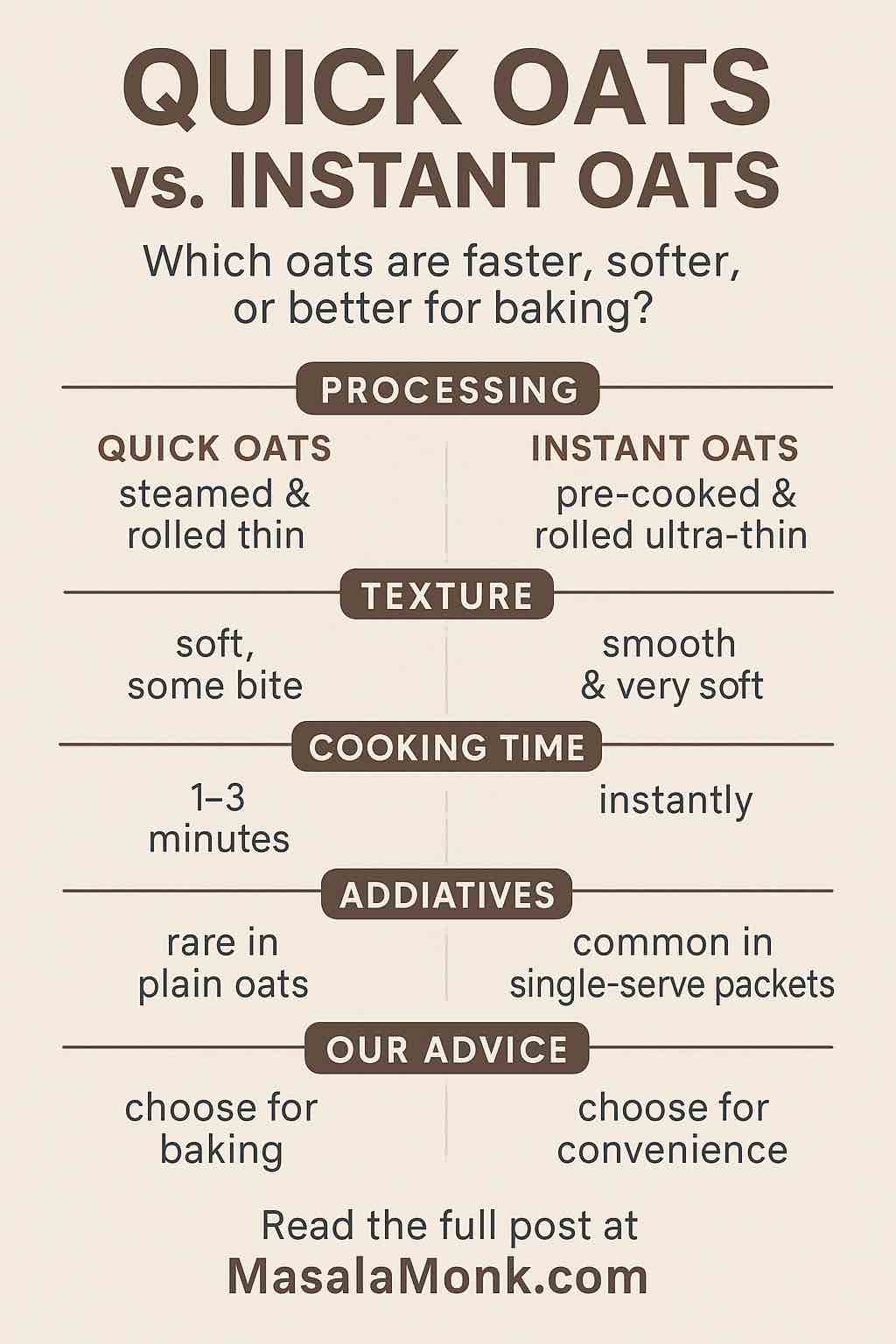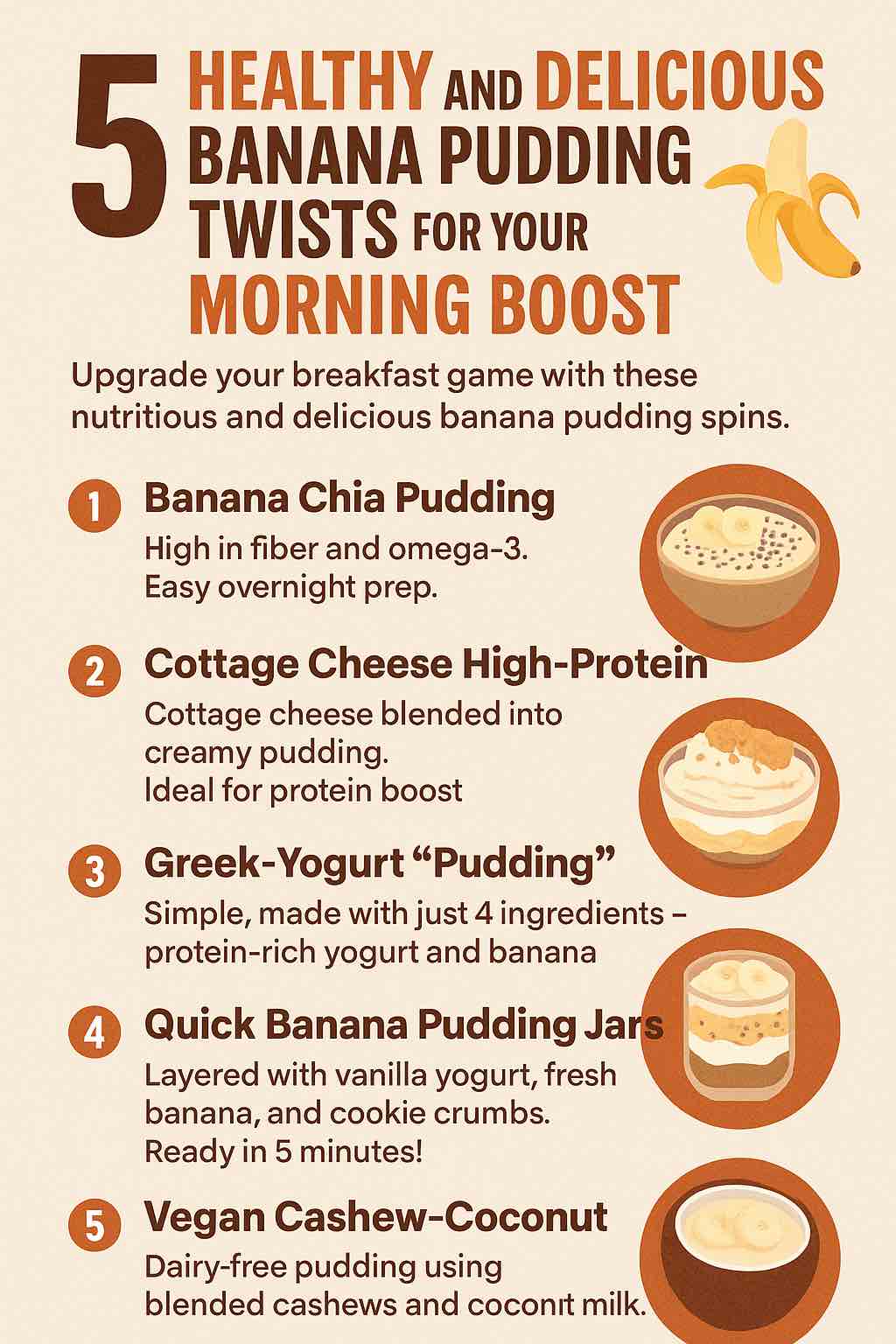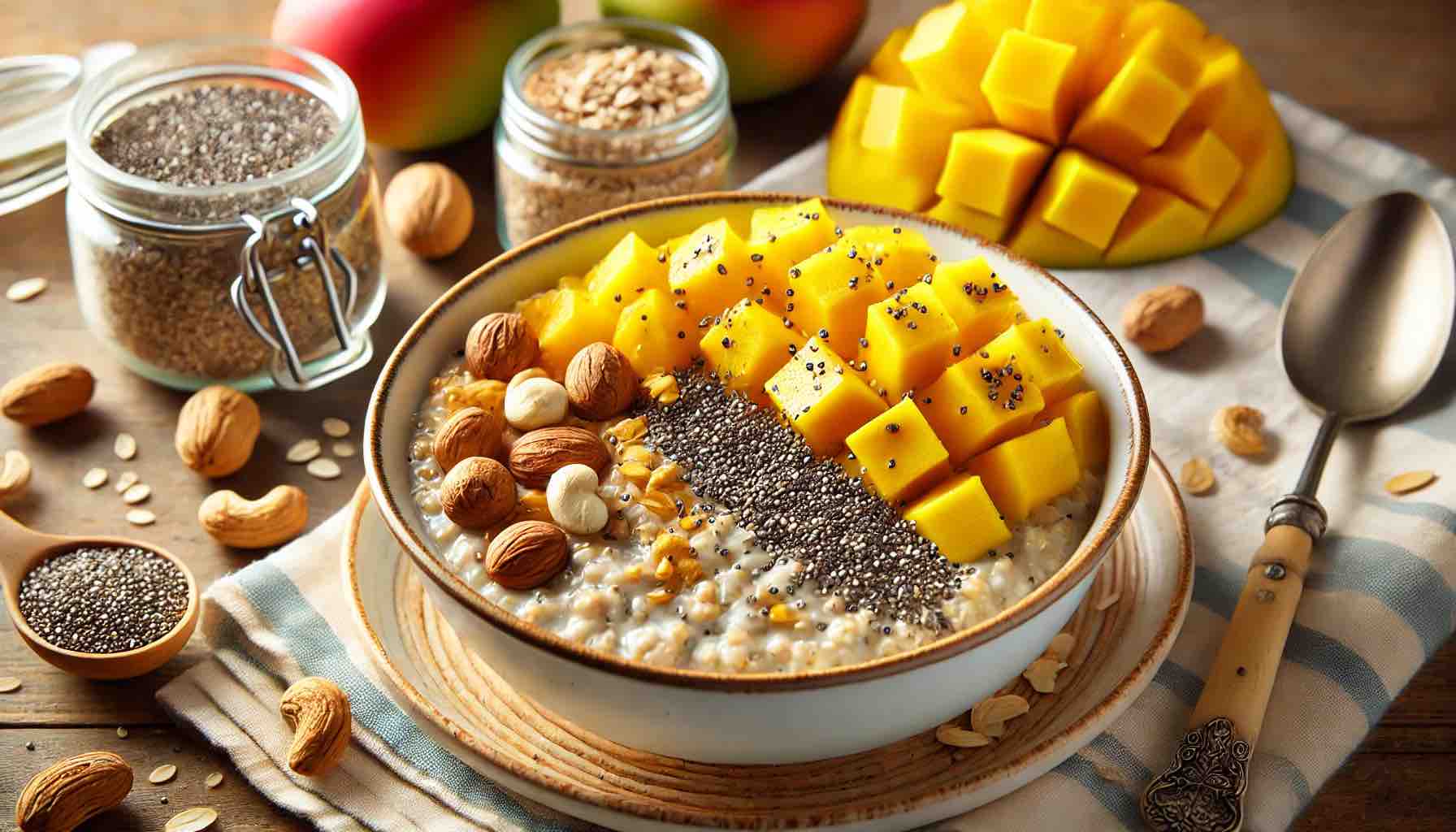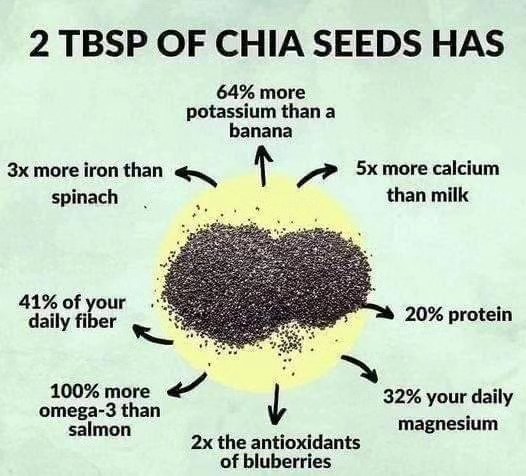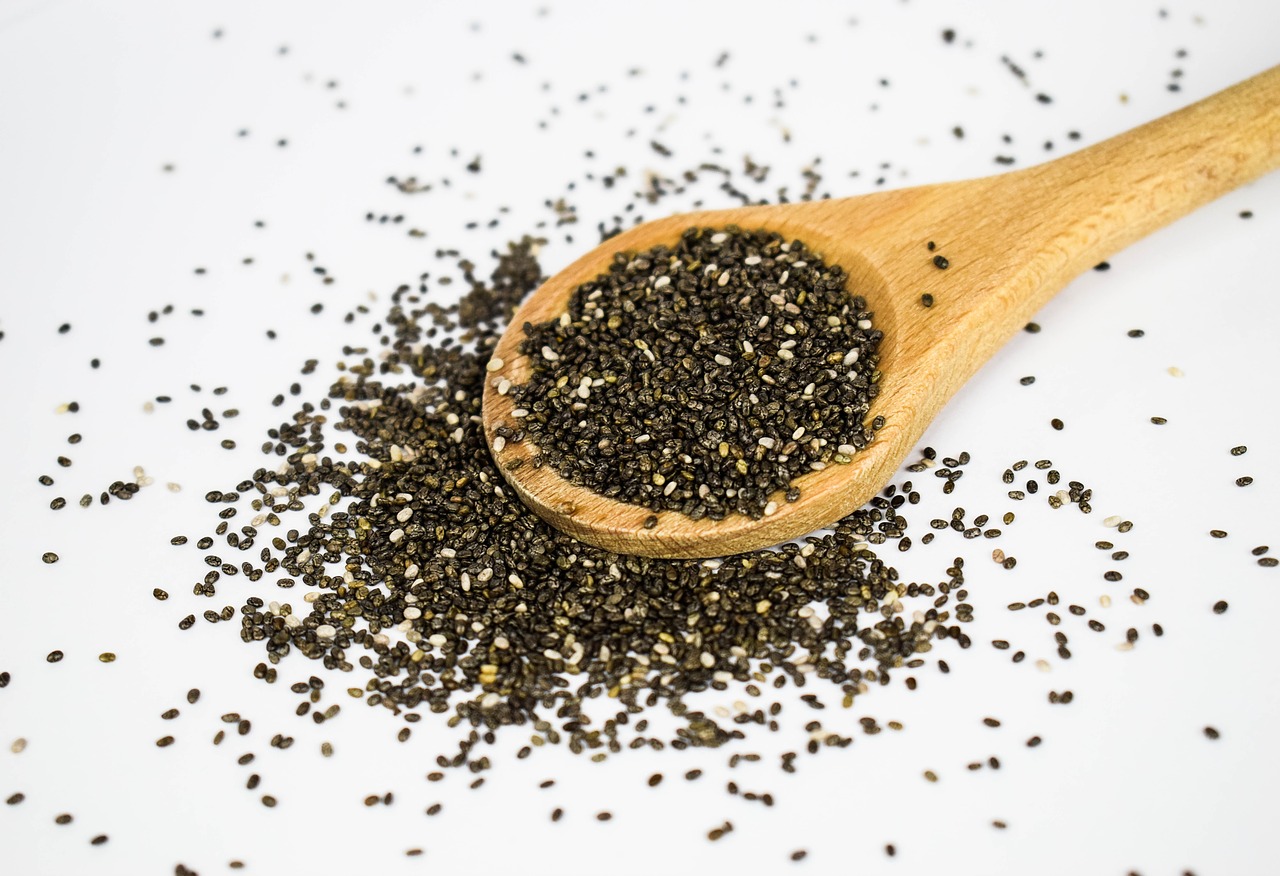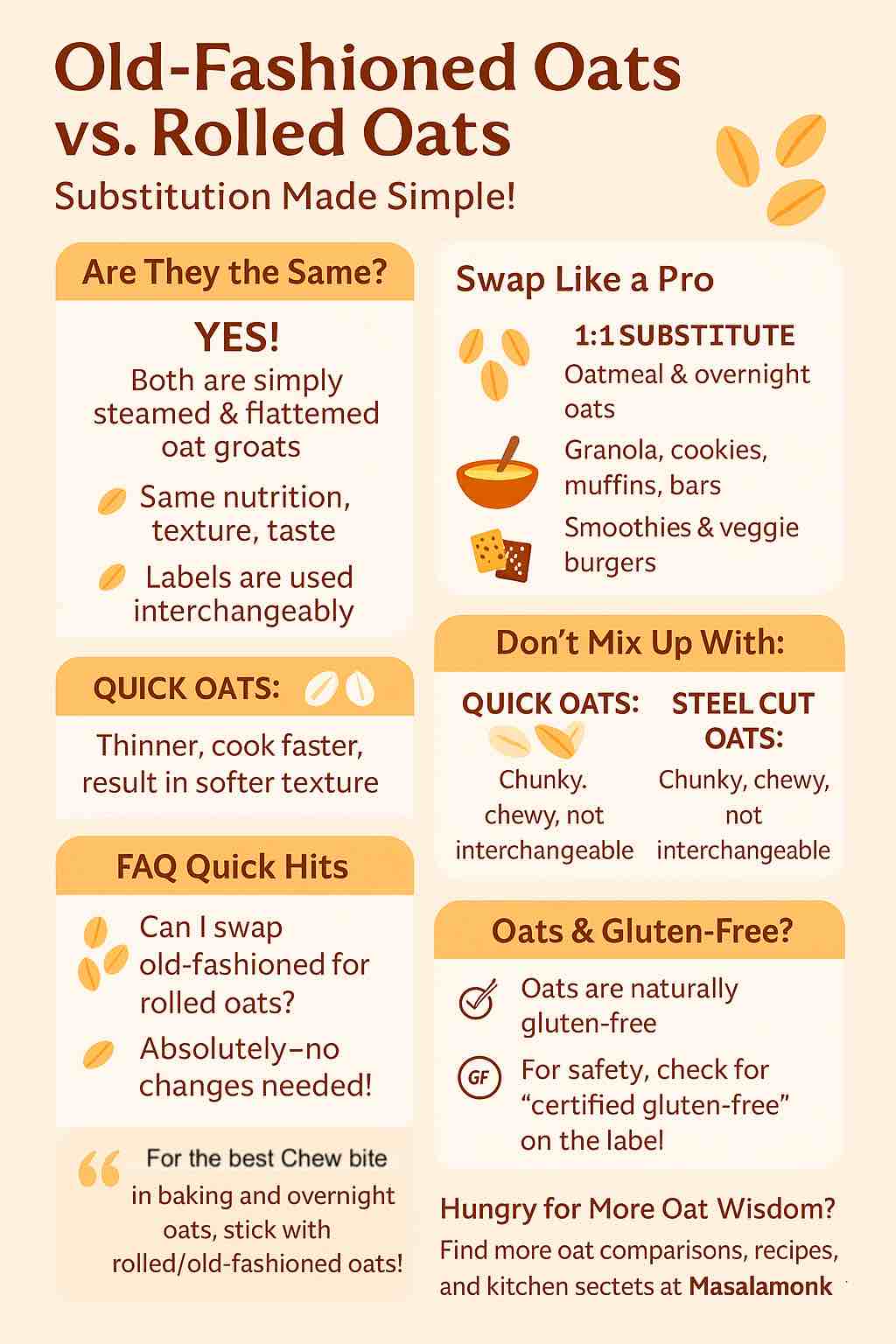
If you love oats—whether for breakfast, baking, or healthy meal prep—you’ve probably encountered the terms “old-fashioned oats” and “rolled oats.” The good news? These names often cause confusion, but they actually refer to the same product! Here’s what every home cook, baker, and oat enthusiast should know about using these oats, when substitutions are seamless, and when it might matter.
What Are Old-Fashioned Oats?
“Old-fashioned oats” is simply another name for “rolled oats.” Both terms describe oat groats that have been steamed and then pressed flat with large rollers, resulting in those classic, thin oat flakes you find in most kitchens and recipes. There is no real difference between the two—manufacturers just use the names interchangeably, and you might see either on a package label.
- Texture: Flat, oval flakes that are soft yet hold their shape when cooked or baked.
- Flavor: Mild and slightly nutty.
- Uses: Perfect for oatmeal (porridge), overnight oats, granola, cookies, muffins, bars, smoothies, or as a binder in burgers and veggie patties.
What About “Rolled Oats”?
Rolled oats, like old-fashioned oats, are made by steaming whole oat groats and rolling them into flakes. This process helps them cook faster than steel cut oats but still gives you a heartier texture and more nutrition than quick or instant oats.
- Look for: Rolled oats, old-fashioned oats, or even “traditional oats”—they’re all the same in most recipes.
Substituting Old-Fashioned Oats for Rolled Oats
Can you substitute old-fashioned oats for rolled oats?
- YES! These two oat types are completely interchangeable in any recipe calling for either one.
How about the other way around?
- Absolutely. There’s no difference—you can swap “old-fashioned oats” and “rolled oats” 1:1 by volume or weight.
This is true for:
- Classic cooked oatmeal/porridge
- Overnight oats
- Baking (cookies, muffins, breads, bars)
- Granola or muesli
- Pancakes, smoothies, or savory uses
Where Substitutions Might Matter
While old-fashioned/rolled oats can replace each other, there’s sometimes confusion with other oat types. Here’s where you need to be careful:
- Quick oats or instant oats: These are rolled even thinner and/or cut smaller, so they cook faster and lose texture. If you substitute quick oats for old-fashioned/rolled oats, your recipe will be softer, sometimes mushy (especially in cookies, granola, or bars).
- Steel cut oats: These are not rolled or steamed, just chopped—completely different texture and much longer cooking time. Steel cut oats are not a direct substitute for rolled/old-fashioned oats in baking or most recipes.
Want to understand all oat types in more depth? Visit our Ultimate Guide to Oats: Types, Nutrition, and Differences Explained.
Practical Kitchen Tips
For best results in baking or granola:
- Use rolled/old-fashioned oats for chewy cookies, sturdy granola, and hearty breakfast bars.
- If you only have quick oats, you can use them in a pinch, but expect a softer, less textured result.
- Never use instant oats in place of rolled oats for baking—they dissolve and change the final texture.
For overnight oats:
- Rolled/old-fashioned oats give you the classic, creamy-yet-chewy bite everyone loves.
For classic oatmeal:
- Both rolled and old-fashioned oats are ideal, cooking in just 5–10 minutes for a creamy, hearty bowl.
In smoothies or as a binder:
- Either works perfectly—blend or stir directly in for extra fiber.
When Might Packaging Matter?
Some brands market “old-fashioned oats” for a rustic, traditional feel, while others label their oats as “rolled oats.” As long as the ingredient list says 100% rolled oats and they look like flat flakes, you’re good to go.
If you’re following a gluten-free diet, always look for certified gluten-free rolled/old-fashioned oats, as oats are often processed in facilities that handle wheat.
Related Oat Comparisons
If you’re curious about how rolled/old-fashioned oats compare to steel cut, quick, or instant oats, be sure to check out:
- Steel Cut Oats vs Rolled Oats: Nutrition, Taste, Cooking & More
- Are Quick Oats the Same as Instant Oats?
- Oats vs Oatmeal: What’s the Difference?
Conclusion
You never need to worry about substituting old-fashioned oats for rolled oats—or vice versa. In fact, they are two names for the same nutritious, versatile ingredient that can power up breakfasts, snacks, and baked treats with ease. Just keep an eye out for quick, instant, or steel cut oats, as those are different in texture, cook time, and use.
Ready to learn everything about oat types, nutrition, and kitchen secrets? Explore our Ultimate Guide to Oats!
10 FAQs – Old-Fashioned Oats vs Rolled Oats Substitution
1. Are old-fashioned oats and rolled oats the same?
Yes. Old-fashioned oats and rolled oats are just two names for the same product.
2. Can I substitute old-fashioned oats for rolled oats in recipes?
Yes, you can substitute them 1:1 in any recipe without adjustment.
3. Can I use quick oats instead of rolled oats?
You can, but the texture will be softer and the final result may be less chewy, especially in baked goods.
4. Can I use instant oats instead of rolled oats?
It’s not recommended. Instant oats tend to break down too much and make recipes mushy.
5. Is there a difference in nutrition between old-fashioned and rolled oats?
No, they have identical nutrition since they are the same product.
6. Which is better for overnight oats: rolled or old-fashioned oats?
They are the same—both are perfect for overnight oats and give the best creamy-yet-chewy texture.
7. Do I need to change the cooking time if I swap old-fashioned oats for rolled oats?
No, use the same cooking time for both.
8. What if my recipe calls for “traditional oats”?
“Traditional oats” is another name for rolled/old-fashioned oats. Use them interchangeably.
9. Can I use rolled oats in place of quick oats?
Yes, but your recipe will have more texture and may take slightly longer to cook or soften.
10. Are rolled oats or old-fashioned oats gluten-free?
Oats are naturally gluten-free, but always check for a gluten-free label if you are sensitive or celiac.

